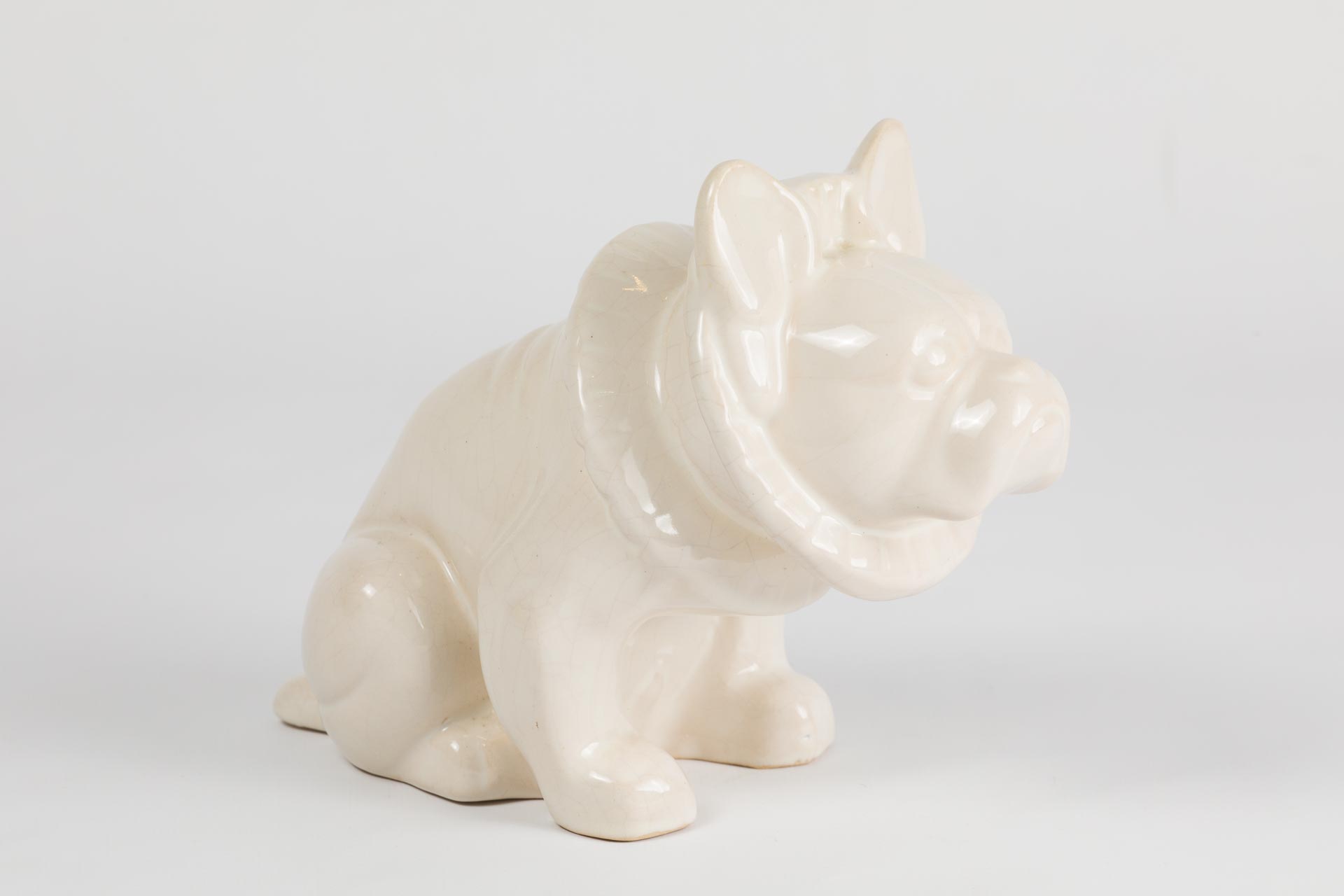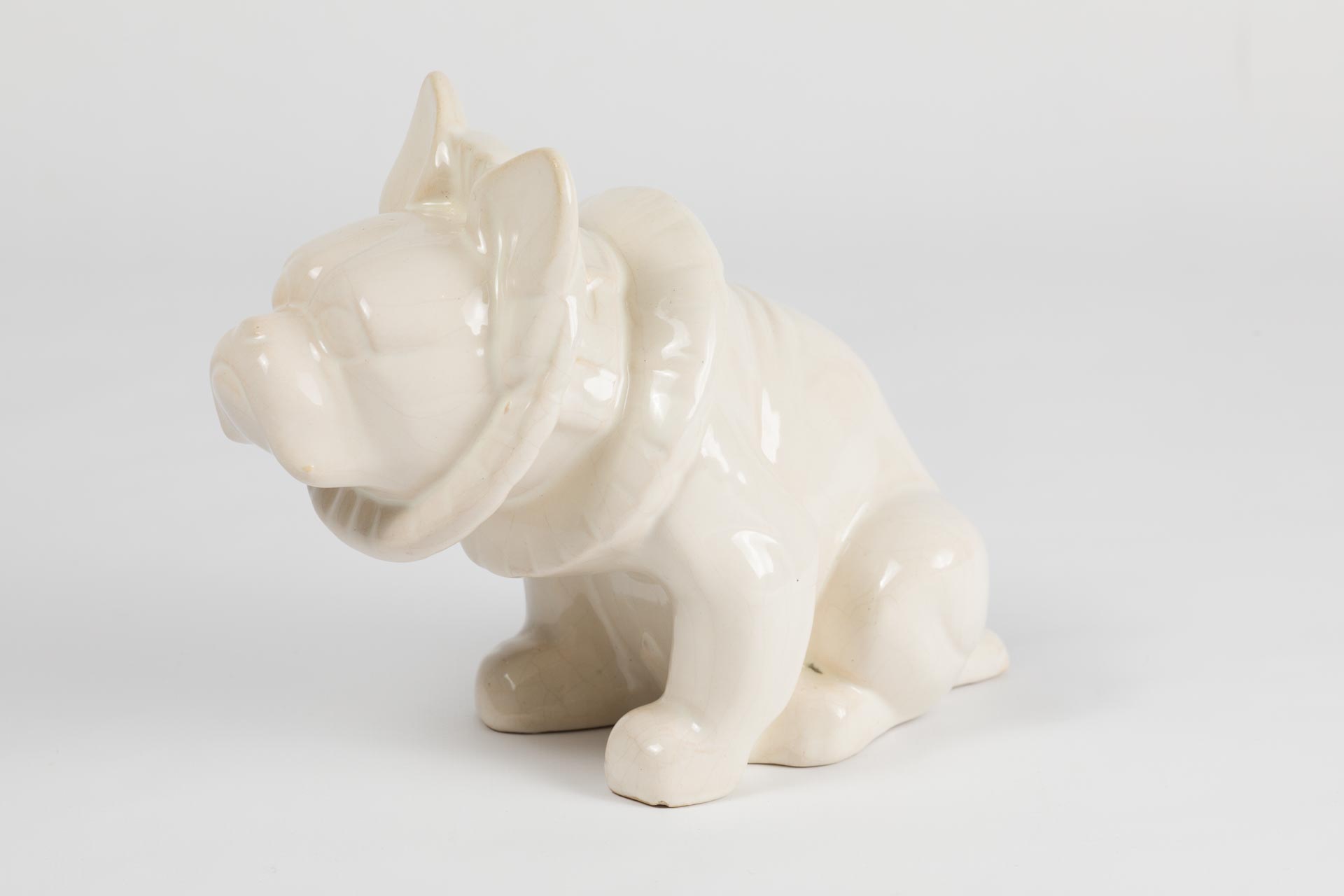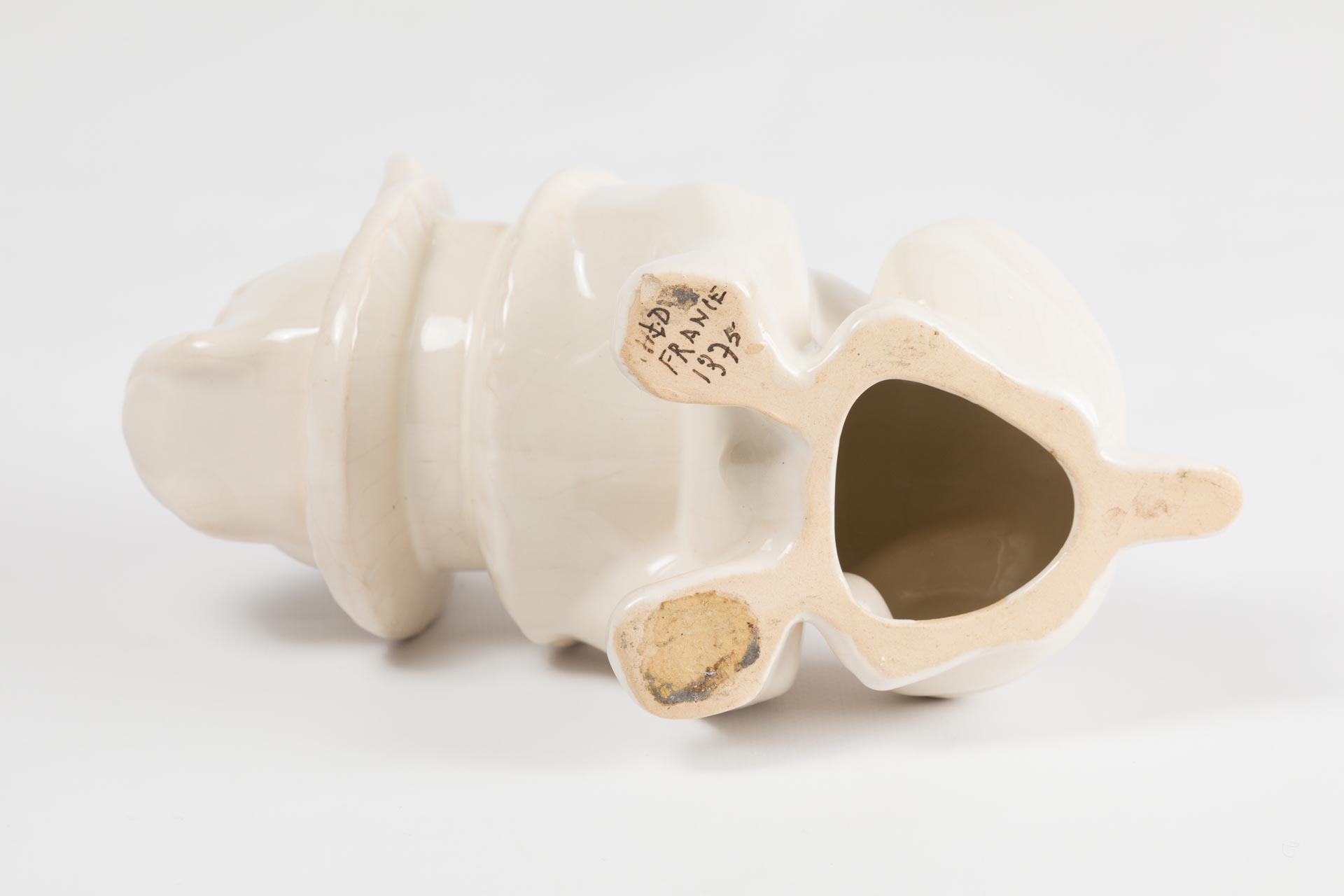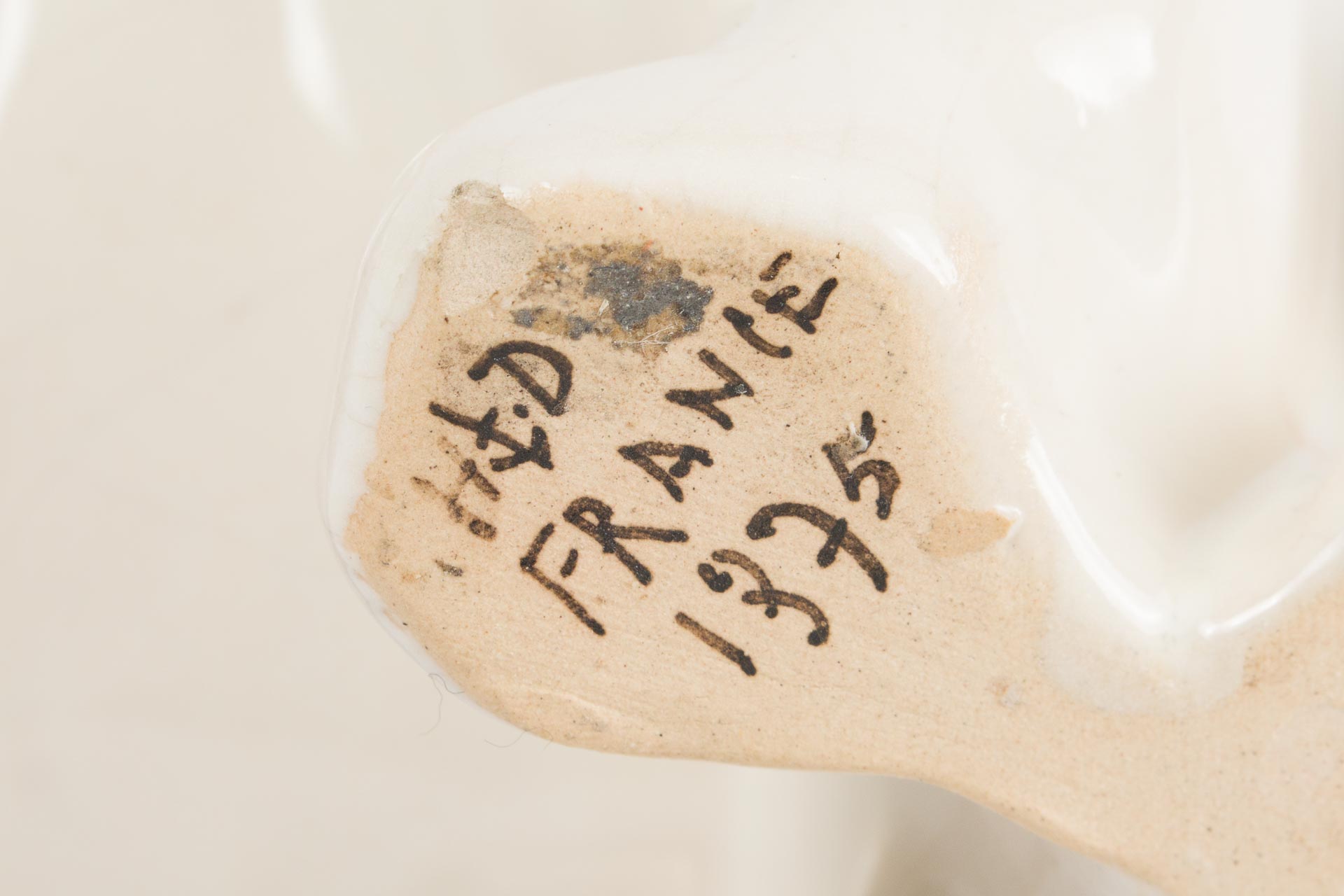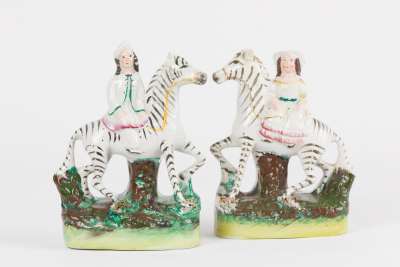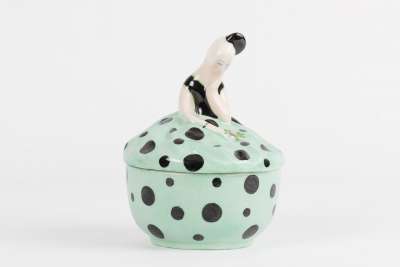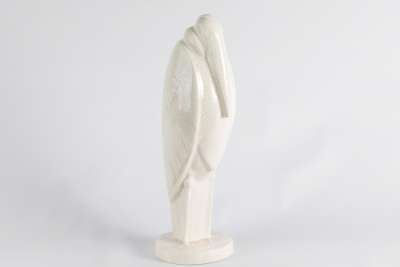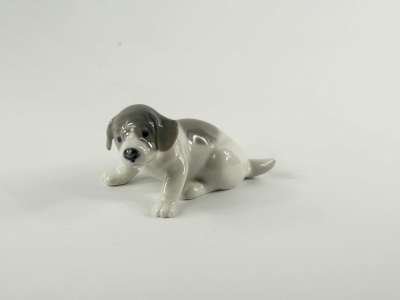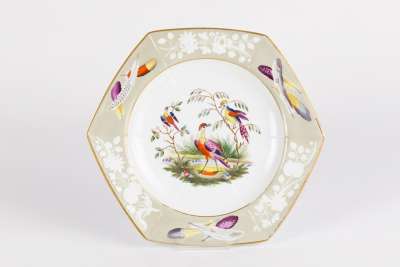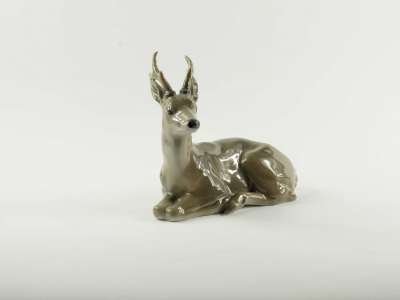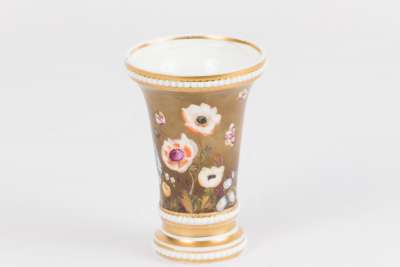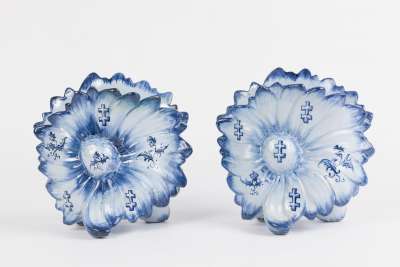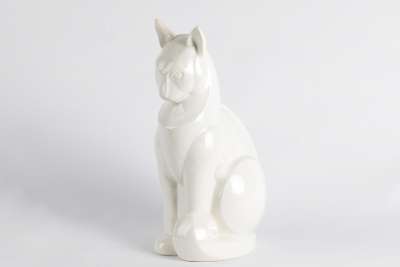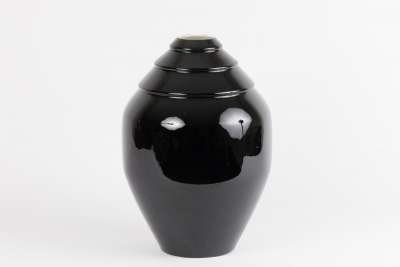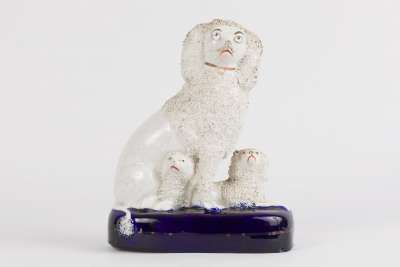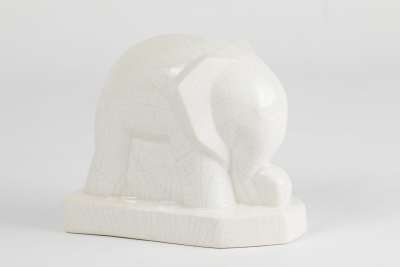This charming Craquelé Bulldog figurine is a notable creation by Henri Delcourt for Boulogne-sur-Mer Pottery, dating back to the period between 1920 and 1930. Originating from France, this piece is a captivating embodiment of early 20th-century ceramic artistry. The bulldog is rendered in a glossy white craquelé glaze, a characteristic feature that gives it a distinctive network of fine cracks, adding to its visual interest. Marked with "HD France" on its base, this item reflects the unique style and craftsmanship of its maker.
Condition Report
This Craquelé Bulldog is in excellent condition, indicating careful preservation over the years. The craquelé glaze, while naturally characterised by its pattern of fine lines, shows no signs of additional wear or damage beyond what is typical for this style. The surface retains its lustre and the intricate details of the bulldog's form are intact and well-defined. The base, marked with "HD France," remains clear and legible, providing assurance of authenticity. There are no visible chips, cracks, or restorations, and the figurine stands evenly without wobbling, signifying its robust construction and durability.
Dimensions
Weight: 510gm, Length: 20cm, Width: 10cm, Height: 15.5cm.
A Decorative Centrepiece
Originally intended as a decorative piece, this Craquelé Bulldog would have been a delightful addition to a home or office setting. Its compact size and striking appearance make it an ideal candidate for display on a mantelpiece or as a conversation starter on a coffee table. The figurine's design and finish are well-suited to complement various interior styles, from classic to contemporary, adding a touch of French ceramic tradition to any space.
Distinctive French Craquelé Style
The Craquelé Bulldog is a fine example of the craquelé style, which was popular in French ceramics during the early 20th century. This style is characterised by a network of fine cracks in the glaze, achieved through controlled cooling processes that intentionally cause the glaze to contract. This technique not only adds a visually appealing texture but also enhances the depth and complexity of the ceramic surface. Such an effect is particularly prominent in this bulldog figurine, where the craquelé pattern accentuates the contours and muscular form of the bulldog, reflecting the artistic trends of its time.
Expert Craftsmanship in French Ceramics
The creation of this Craquelé Bulldog involved meticulous craftsmanship, typical of Boulogne-sur-Mer Pottery's production techniques during the 1920s and 1930s. The ceramic material was shaped and fired at high temperatures to achieve its robust form and smooth finish. The unique craquelé glaze was then applied, requiring precision in both application and firing to achieve the desired pattern without compromising the integrity of the piece. This process not only reflects the technical skill of the artisans but also their artistic vision in producing a piece that stands out for its texture and form.
Henri Delcourt: A Notable Artisan
Henri Delcourt, the creator of this piece, was a renowned figure in the French ceramic industry, known for his work with Boulogne-sur-Mer Pottery. His pieces are often marked by a distinctive style that blends traditional techniques with innovative designs. The mark "HD France" found on the base of the bulldog is a testament to Delcourt's reputation and the quality associated with his creations. His work during this period is celebrated for capturing the essence of French artistry and craftsmanship, making his pieces highly sought after by collectors and enthusiasts.
Collecting Craquelé Ceramics
Ceramic pieces like this Craquelé Bulldog are cherished by collectors for their unique aesthetic and historical significance. Collectors are often drawn to the craquelé style for its visual texture and the skill required to produce such effects. Pieces from Boulogne-sur-Mer Pottery are particularly valued due to their association with skilled artisans like Henri Delcourt. As a result, such items frequently find a place in private collections and museums, appreciated for both their artistic merit and their representation of early 20th-century ceramic trends. The enduring appeal of these pieces lies in their combination of beauty, craftsmanship, and historical context.
